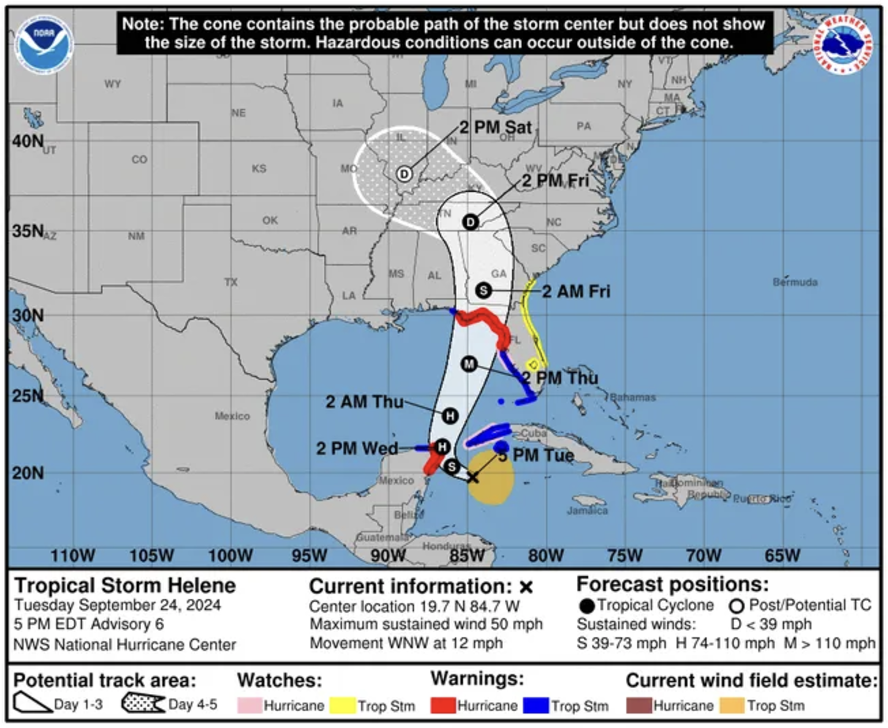Advancing Cyclone Modeling: The Power of AI in Navigating a Changing Climate
.png?w=100&fit=max&blur=50)
The recent devastating impacts of Hurricanes Helene and Milton underscore the critical importance of accurate and reliable cyclone modeling. As the world grapples with the increasing intensity and frequency of these powerful storms, understanding their behavior and predicting their intensity and track is paramount for protecting lives and limiting property damage and economic losses. Climate change is further exacerbating these challenges, making it imperative to develop advanced modeling techniques to anticipate future cyclone threats.
Accurately modeling cyclones is a complex task due to the intricate interplay of atmospheric and oceanic processes. These storms are highly dynamic, with their intensity and track influenced by a myriad of factors, including sea surface temperature, wind shear, and atmospheric pressure. These factors are themselves influenced by climate change, making accurate prediction even more challenging.
 Figure 1. Hurricane Helene track and intensity forecasts from NOAA’s National Hurricane Center rely largely on coupled models like the Hurricane Analysis and Forecast System (HAFS).
Figure 1. Hurricane Helene track and intensity forecasts from NOAA’s National Hurricane Center rely largely on coupled models like the Hurricane Analysis and Forecast System (HAFS).
There are primarily two main approaches to cyclone modeling:
Two-Stage Models: These models simulate the cyclone's track (stage 1) and intensity (stage 2) separately from the surrounding atmospheric and oceanic conditions. This approach is computationally less demanding, making it suitable for global, long-term simulations and risk assessments. Examples of two-stage models include the Synthetic Tropical cyclOne geneRation Model (STORM) and Statistical Hurricane Intensity Prediction Scheme (SHIPS).
Coupled Models: These models simulate the entire atmospheric and oceanic system, including the cyclone itself. This approach represents the cyclone's environment and its interactions with the surrounding atmosphere and ocean. However, these models are computationally intensive and require significant resources. Examples of coupled models include NOAA’s Hurricane Weather Research and Forecasting (HWRF) model and the more recent Hurricane Analysis and Forecast System (HAFS) (Figure 1).
 Figure 2. Example of the STORM model’s two-stage approach: first simulating the key features of the cyclone’s track progression over time (left), followed by the corresponding wind fields (right).
Figure 2. Example of the STORM model’s two-stage approach: first simulating the key features of the cyclone’s track progression over time (left), followed by the corresponding wind fields (right).
At Sust Global, we employ a two-stage modeling approach, as exemplified by the STORM model (Figure 2). In the first stage, STORM simulates the cyclone's track, predicting its path over time as well as key features like pressure in the eye of the storm (Figure 2, left). In the second stage, it generates wind fields based on the simulated track using the widely adopted Holland model (Figure 2, right). The Holland model characterizes the wind field as a function of pressure gradients and radial distance from the storm center. By combining machine learning techniques with physical parameterizations, STORM operates as a hybrid statistical-dynamical model, delivering accurate and reliable forecasts for tropical cyclones.
Two-stage models offer several advantages. Their computational efficiency enables us to run tens of thousands of simulations to understand cyclone risk across a wide range of scenarios, including the most extreme, rare cases. We can extend these simulations for every decade out to 2100 under three Shared Socioeconomic Scenarios (SSP1-2.6, SSP2-4.5, and SSP5-8.5) at a spatial resolution of 10km.
AI offers new opportunities in cyclone modeling, promising to significantly improve our understanding and prediction of these powerful storms. By leveraging AI techniques, we can enhance both two-stage and coupled models. Two-stage models can benefit from AI's ability to analyze vast amounts of data and identify complex patterns, leading to more accurate and reliable forecasts. Coupled models, while more complex, can also be refined through AI-driven techniques, such as foundation models, enabling a more comprehensive representation of cyclone dynamics.
AI can significantly enhance cyclone modeling by analyzing large datasets, identifying subtle patterns, and refining the prediction of cyclone track, intensity, and potential impacts. By processing information more rapidly, AI-powered models can enable real-time updates and timely warnings. Furthermore, AI can assimilate diverse data sources, such as satellite imagery, radar data, and reanalysis products, to improve the initial conditions for model simulations. Additionally, AI can be used to develop more accurate and physically based parameterizations for processes like convection, radiation, and boundary layer physics.
As AI continues to advance, its potential to revolutionize cyclone modeling is immense. To learn more about how Sust Global is leveraging AI and machine learning to improve cyclone risk assessment, please contact us.
This article was authored by Tristan Ballard, PhD - Senior AI Research Scientist at Sust Global